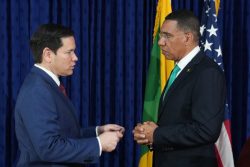Amerindian literature is a significant factor in the Guyanese cultural heritage, and it is important to highlight its contribution at a time when there is a focus on the Amerindian heritage in the country. The literature is wide-ranging and reaches across various accounts including the anthropological, the historical, the scientific and the critical, in addition to the corpus of creative literature. Going still further into the various sub-divisions, there is the literature generated by the Amerindian nations themselves, creative works by writers of Amerindian extraction, other works of Guyanese fiction, poetry and drama which reflect or make use of indigenous themes, and works which derive from, reflect or make use of the Amerindian ethos. Also, the several accounts include those written in the nineteenth or early twentieth centuries by travellers, botanists, anthropologists, historians or colonial personalities.
 The country is indebted to Amerindian cultures, including the ancient roots of those cultures, for its national identity. This begins with the name ‘Guyana‘ given to the nation itself, and continues with the names of scores of rivers, place names and numerous cultural items. Because of the ethnic identity of the nation’s true indigenous people, Guyanese archaeology, as is the archaeology of the whole Amazon region, is Amerindian archaeology, and this and the many national archival treasures arising from it, make up a significant component of the Guyanese cultural heritage. Even the ‘wonders‘ of Guyana include such extraordinary phenomena as the Timehri rock paintings which are expressions of the ancient Amerindian cosmos.
The country is indebted to Amerindian cultures, including the ancient roots of those cultures, for its national identity. This begins with the name ‘Guyana‘ given to the nation itself, and continues with the names of scores of rivers, place names and numerous cultural items. Because of the ethnic identity of the nation’s true indigenous people, Guyanese archaeology, as is the archaeology of the whole Amazon region, is Amerindian archaeology, and this and the many national archival treasures arising from it, make up a significant component of the Guyanese cultural heritage. Even the ‘wonders‘ of Guyana include such extraordinary phenomena as the Timehri rock paintings which are expressions of the ancient Amerindian cosmos.
So, too, are some works in contemporary Guyanese literature and art. It is possible to identify specific movements in the art as well as the preoccupations of a number of individual artists and writers that contribute to this ethnic influence in the creative output. But no account of Guyanese literature can exclude the national oral literature, and in the particular context of Caribbean literature, the product of the oral tradition is now recorded and anthologised within the mainstream. This is not yet the norm in published collections or critical accounts of Guyanese literature. It is therefore not widely or routinely acknowledged that the national literature includes Amerindian folktales, myths and legends.
But we need to look to those compositions in the oral literature to find the starting point of the contribution of the Amerindian heritage to the literature. However, while this necessary acknowledgement is reticent, there is no shortage of documentation, publications and written accounts. The mythology, the world view, the cosmology, the ethos of all the Guyanese Amerindian ethnic groups are recorded in several publications of tales and comments upon them.
There are many collections of stories, starting from work done in the nineteenth century by Rev WH Brett, an English missionary and colonial public servant in British Guiana between 1840 and 1879. He published Guiana Legends (circa 1868), tales collected throughout his stay in the colony, in a document which was reprinted in 1931 and 1981. Brett also re-wrote them in verse in another publication called Legends and Myths of the Aboriginal Indians of British Guiana (1880). A Guyanese Ambassador, Odeen Ishmael also researched, collected and published two collections: Amerindian Legends of Guyana (1995) and Guyana Legends: Folktales of the Indigenous Amerindians (Kuwait, 2011). Another document is the innovative form involving the printing of tales on a calendar. The Demerara Mutual Life Insurance Com-pany in Trinidad and Tobago published Amerindian Folk Tales from the Carib-bean by Dorothy Bland St Aubyn (1909-1995) in a 2005 calendar. St Aubyn, who was born in Guyana, and her husband are said to have collected some 2,000 folk tales while working in the civil service in BG, Belize and Trinidad. Yet another published collection is that done by Walter Edwards and HR Hubbard, Folktales and Legends of Some Guyana Amerindians, published by the Amerindian Research Unit, University of Guyana in 1980.
One of the most substantial documents was produced by Walter E Roth in 1915, An Inquiry into the Animism and Folklore of the Guiana Indians. Roth’s material and his comments are very extensive with explanations to accompany the several tales that he records. In addition, there are other accounts provided by traveller and colonial official Frederick im Thurn in Among the Indians of Guiana (1883) and Indian Notices by William Hilhouse (1825), reprinted at the University of Guyana with an Introduction by Mary Noel Menezes in 1976 and most recently in the Guyana Classics Series by the Caribbean Press in 2010. Then fiction writer Jan Carew writes his version of a legend in The Coming of Amalivaca published by the Guyana Book Foundation in 1998.
Many different types of tales are recorded and analysed in these publications, which also allow comparisons of the different variants of the same stories that exist among the people of different groups and across the different collections. These include Creation Myths, a type of folk tale that may be found in vastly different cultures in disparate corners of the globe. They explain how particular nations of people came into being, but do not always involve the divine act of a creator or god. There are remarkable similarities between some of the Amerindian variants and those of the Yoruba in Nigeria where we learn about the creation of the Yoruba nation at Ile Ife (home of the gods). The accounts of Hilhouse who comments on the Arawaks, the Caribs and the Akawaio are very reminiscent of the Yoruba and involve the casting of the branches of a large tree into a large body of water with the animated beings arising from the pieces.
The stories retold by Mrs St Aubyn about the Patamona, Warrau, Arekuna and Caribs are also close to the versions provided by Roth and Brett, particularly the story of the origin of the Caribs. Brett tells How the Caribbean Got its Name which explains the origins of that group who gave their name to the Caribbean region. He also relates the story of The First People which closely resembles the explanations in Roth whose The Origin of the Caribs has two versions. The tales tell of wars involving the Warraus (called ‘Warrahoons‘ by St Aubyn) and similar to what happens in the Yoruba and other creation myths, a whole nation of people arise from the scattered remains of a slaughtered animal, in this case a magical anaconda who used to be transformed into a man at nights.
The other interesting detail in these various myths may be found in the origin of the Caribs. In these tales it is the Warraus who are represented as fierce and warlike. They are the aggressors and the deceivers in conflicts with the Caribs who, throughout history, have been given the reputation as warlike. In two versions of the creation myth they are fair and peaceful; they suffer from the villainy and aggression of the Warraus, “drink paiwari” in gestures of friendship and promote “peace and brotherhood.“
The tales in these publications are not always pure transcriptions. St Aubyn rewrites them to fit a Trinidadian environment, using a moroccoy (Trinidadian land turtle) as narrator and introducing a number of Trinidadian animals. Brett in one of his collections reworks the stories into verse and betrays a Christian influence.
What is more, the chroniclers and commentators in colonial times are harsh in their analysis of Amerindian beliefs, mythology and ethos. They are skeptical of kanaima, and very critical of the medicine men/shamans/piaimen who they represent as greedy and villainous. Ironically, Hilhouse whom Menezes calls a “Las Casas of British Guiana” and a consistent advocate for the rights of the Amerindians, is nevertheless most unflattering in his analysis of the people’s culture and mores. Of the creation myths he writes, “the details of this tradition are nearly as absurd and obscene as the mythology of the Hindus.” Of the medicine men he writes “he… derives all his subsistence from the contributions levied on the credulity of the ignorant.”
Yet, the great corpus of these tales, legends and myths are of unfathomable interest in their various culture heroes and culture traits, and the various explanations of the origins of the name and mysterious surroundings of the Kaieteur Falls. These are tales with a mixture of disappointing triviality and grand heroism. Some, like the Kaieteur legends and the story (history?) of Amalivaca, are accompanied by proof visible in the landscape that they are true accounts. The Amerindian oral literature is a deep and lively part of Guyanese literature.








